| Reviews & Columns |
|
Reviews DVD TV on DVD Blu-ray 4K UHD International DVDs In Theaters Reviews by Studio Video Games Features Collector Series DVDs Easter Egg Database Interviews DVD Talk Radio Feature Articles Columns Anime Talk DVD Savant Horror DVDs The M.O.D. Squad Art House HD Talk Silent DVD
|
DVD Talk Forum |
|
|
| Resources |
|
DVD Price Search Customer Service #'s RCE Info Links |
|
Columns
|
|
|
Lutz Dammbeck: Filme und Mediencollagen 1975-1986
Dammbeck, now age 60, was among the first generation born in communist East Germany. After graduating from a graphic design college, he eventually found employment at the state-run DEFA film studio. At DEFA, Dammbeck completed a half-dozen animated shorts beginning with the ideologically-correct children's story Der Mond (The Moon) in 1975, and ending with his grimly surreal Die Flut (The Flood) in 1986. All of these animated shorts, plus the 44-minute Herzog Ernst (Duke Ernst), begun at DEFA but finished after Dammbeck emigrated to West Germany, are included in this set.
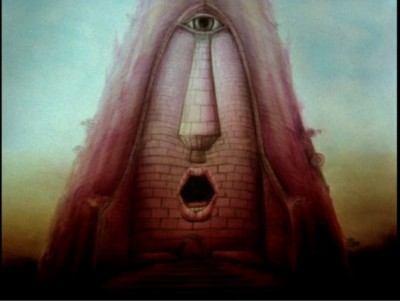 | 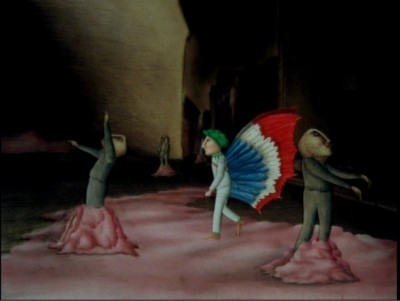 |
Though Dammbeck's apparent talent lay in poster design and animation, he increasingly moved toward independently-produced mixed media, or what he calls "media collages", beginning with 1979's Metamorphosen I (Metamorphosis I), a six-and-a-half-minute, black-and-white, 8mm film with crude animation scratched onto developed film of Dammbeck and friends traveling by train through Leipzig. Outside the studio system, Dammbeck also made the twelve-minute, mixed-media short Hommage à La Sarraz, which expressly disclaims all ideological and commercial purpose in pursuit of pure art.
Ironically, Dammbeck made his most ideologically daring work while working for DEFA's animation department. After making a more-or-less ideologically neutral animated short in 1978 (Lebe! / Live!), Dammbeck's animated work increasing challenged state repression. Der Schneider von Ulm (The Tailor of Ulm, 1979, 13:48) based loosely on a Bertolt Brecht poem, features a nightmarish world with people literally stuck to the ground under the watch of an omniscient eye, where one brave nonconformist seeks to fly. Perhaps his most overt challenge to the State came two years later in Einmart (14:25), a dark and daring allegory featuring divided body parts crawling about a grim, surrealist landscape under the watch of an oppressive overlord, while beyond the high wall there's a bright world of people flying carefree.
Dammbeck stepped back a bit from the ideological precipice with his next animated short Die Entedeckung (The Discovery, 1983, 16:40) about an unconventional bee and frog who find they have more in common with one another than with their own kind, but his follow-up Die Flut (The Flood, 1986, 9:26) pushed the edge again with its depiction of two survivors of a plane crash (or is it of a wrecked civilization?) who when they find that the island they're stranded on is sinking struggle to build a lifeboat - if that isn't an apt metaphor for the DDR circa 1986, what is?
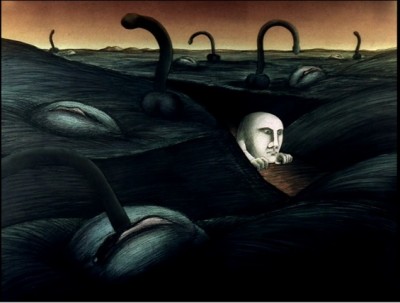 | 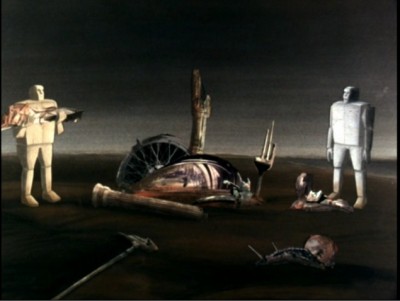 | 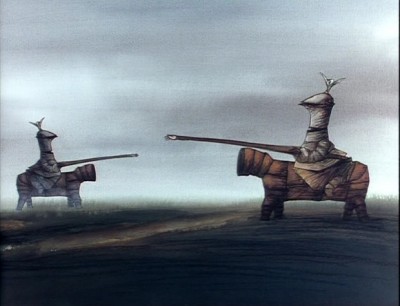 |
Despite being bankrolled by the state studio to make his ideologically questionable animated shorts, Dammbeck was frustrated with his failure to gain state support for his non-commercial experimental film Herakles Höhle (The Cave of Hercules), a purposefully cryptic and obscure mix of stories about dead children and heroes, with liberal doses of banalities and absurdities from West German capitalists about the importance of teamwork, the ideal male body for selling clothes, the half-life of heroes, and executive coaching in "hygiene factors". So in 1986 Dammbeck emigrated to West Germany with his barely begun Herakles Höhle and his partially-completed Herzog Ernst.
To celebrate his newfound freedom in Hamburg, Dammbeck embarked on a mixed media live performance entitled REALFilm. Presented in this set without subtitles from an 8mm low-fidelity, black-and-white recording. This performance piece mixes interpretive dance, discordant music, the gnashing of film with teeth, the waving of florescent lights, spoken word, archival film of Nazi youth projected on bedsheets being painted and ripped, and so forth, all filmed as though it were a grade school play, totaling forty-five very long minutes. REALFilm ultimately adds little or nothing to the body of performance art on film.
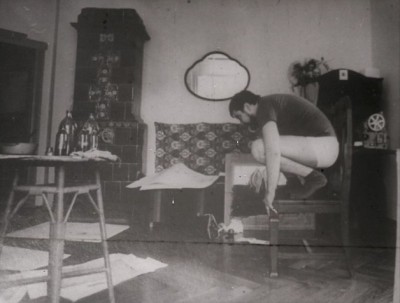 | 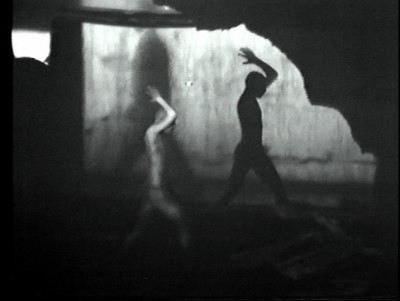 | 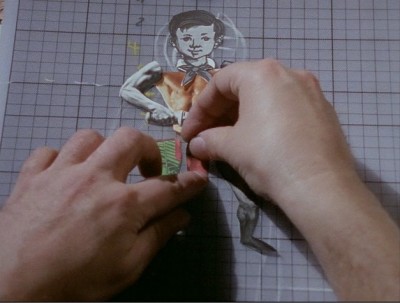 |
In 1990, Dammbeck completed his pet project Herakles Höhle (45 min.) though I doubt anybody much cared, and three years later (seven years after Die Flut) he finished the engrossing 44-minute animation Herzog Ernst (Duke Ernst) about a young, fatherless knight who finds the rewards offered by working within a corrupt hierarchical system pale in comparison to the joys available to freethinkers. Herzog Ernst is a great work of surreal animation influenced by the masterworks of Polish poster artists such as Jan Lenica and Franciszek Starowieyski. The animation and storytelling on display here rivals that of René Laloux's La Planète sauvage (Fantastic Planet) and invites the viewer to consider the conventions of medieval fantasy in a new light. Unfortunately Herzog Ernst marks both the apex and apparent end of Dammbeck's animation.
Presentation
This 2-disc set was released by Edition Filmmuseum, a label founded by six German-language national archives and the Goethe-Institut.
Video:
Edition Filmmuseum has done an outstanding job here. Some of the material looks less than ideal, especially REALFilm, but no flaws appear attributable to the transfer. The color of the animation is rich, detail and contrast are good, and the material is clean and mostly damage free.
Audio:
The 2.0 DD audio sounds fine with steady audio levels, no dropouts, and few distortions. With the exception of REALFilm, optional English subtitles are provided for everything that needs it.
Extras:
In addition to the films identified above, this set also includes an informative 42-minute interview with Lutz Dammbeck in 2008 discussing his academic training, work at DEFA, and his independent media collages through 1990's Herakles Höhle; a gallery of posters designed by Dammbeck between 1977-1986 (15 images); nine minutes of behind-the-scenes preparation work for REALFilm and Herakles Höhle, ROM documents and drawings by Dammbeck, and a 20-page mixed English and German booklet with with essays by Fred Gehler, Claus Löser, Bärbel Dalichow and Ralf Foster.
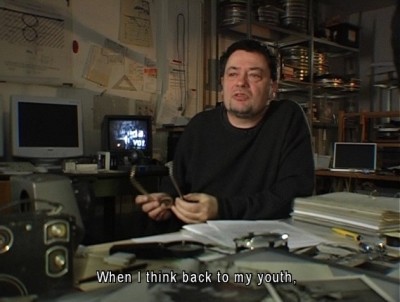 | 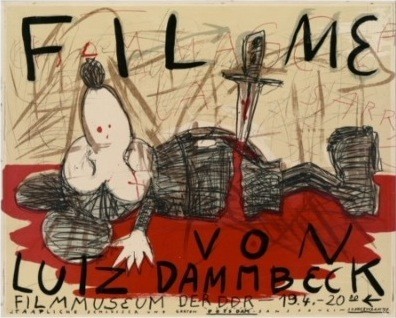 |
Final Thoughts:
Edition Filmmuseum's two-disc release Lutz Dammbeck: Filme und Mediencollagen 1975-1986 reveals the inadequacies of DVD Talk's rating system. What does it mean to assign a title a "rent it" if most readers will have to choose between buying it and not seeing it at all?
If you're a fan of surrealist animation, consider buying this release for the outstanding animated shorts included on the first disc. If you've indifferent to surrealist animation, then skip it because there's little else of value here.
|
| Popular Reviews |
| Sponsored Links |
|
|
| Sponsored Links |
|
|
| Release List | Reviews | Shop | Newsletter | Forum | DVD Giveaways | Blu-Ray | Advertise |
|
Copyright 2024 DVDTalk.com All Rights Reserved. Legal Info, Privacy Policy, Terms of Use,
Manage Preferences,
Your Privacy Choices | |||||||












